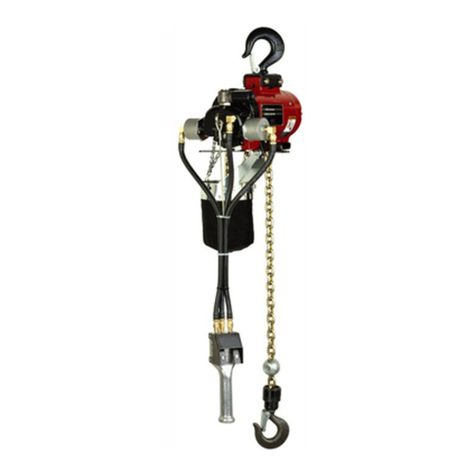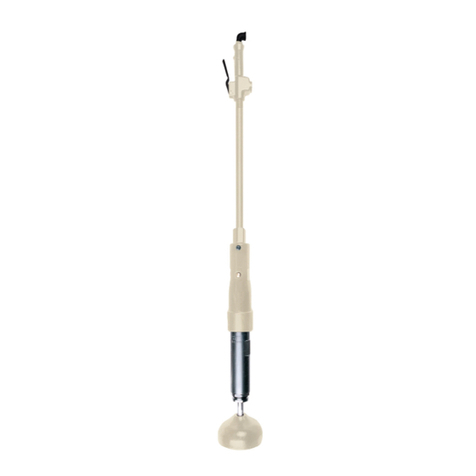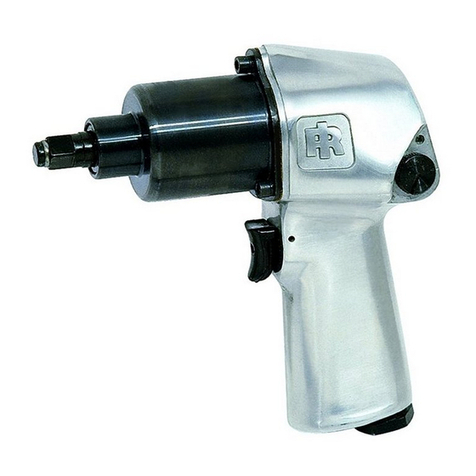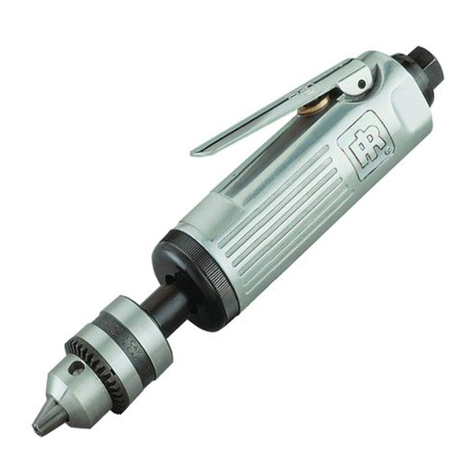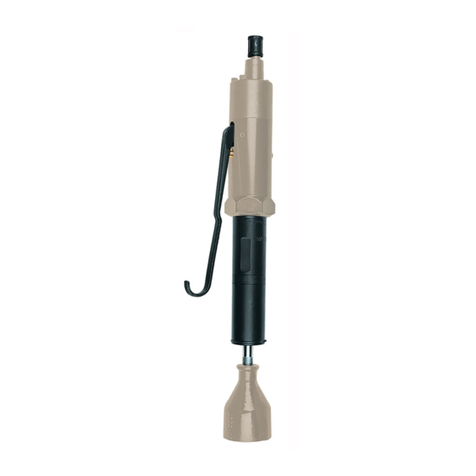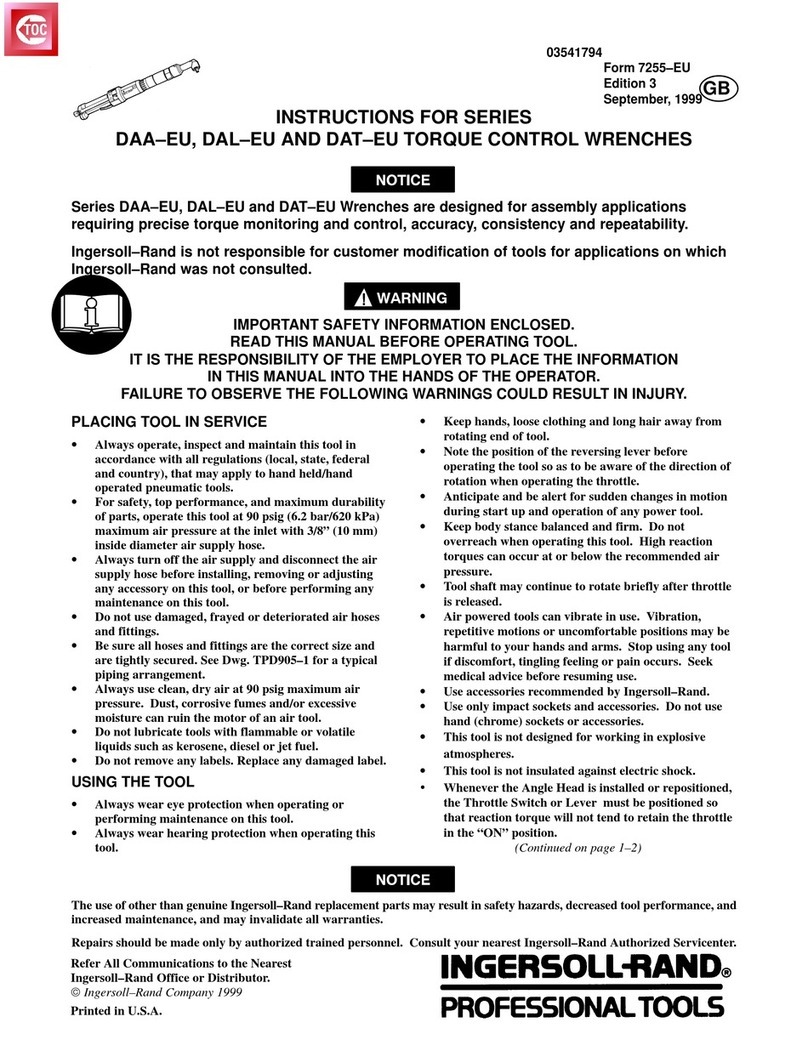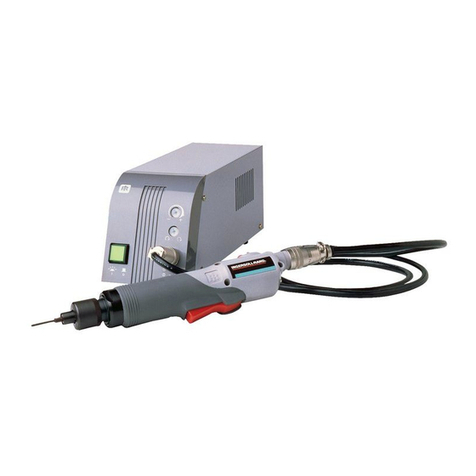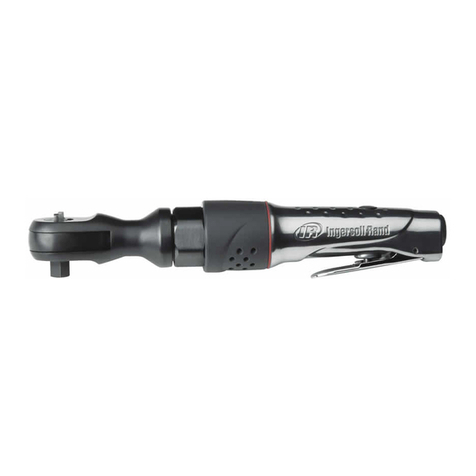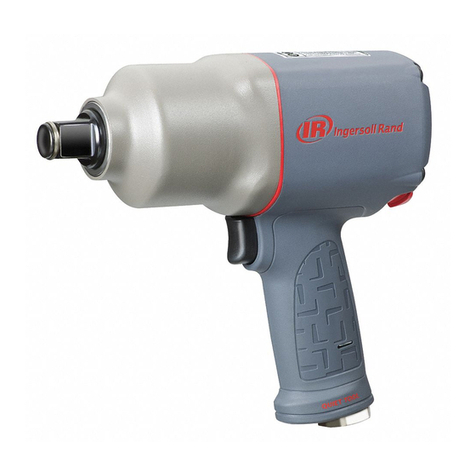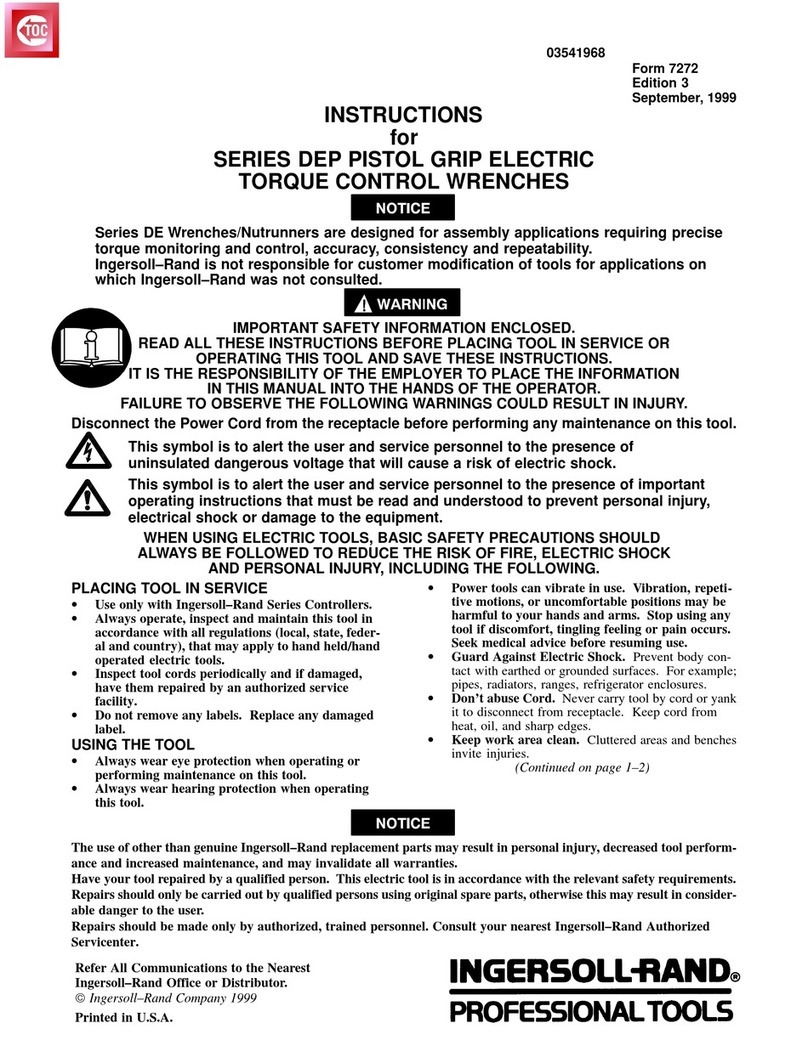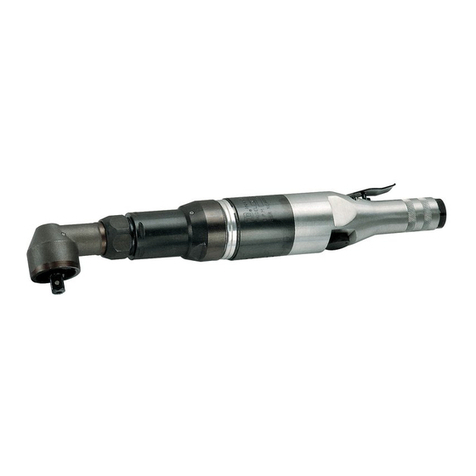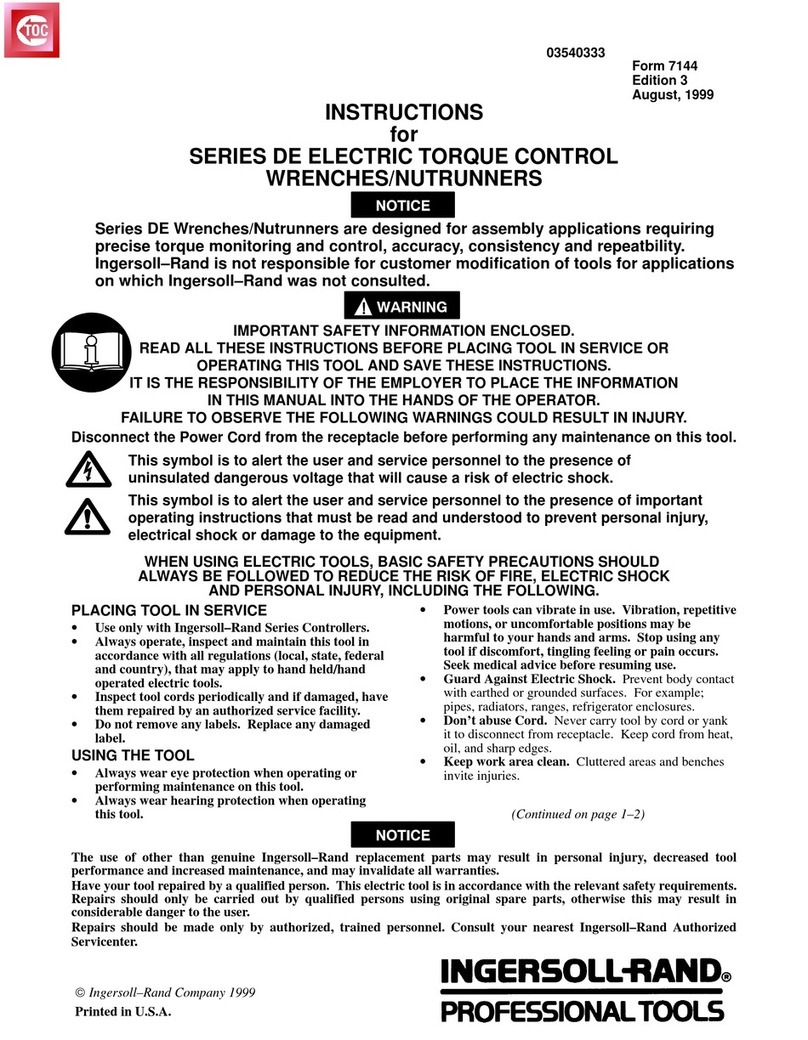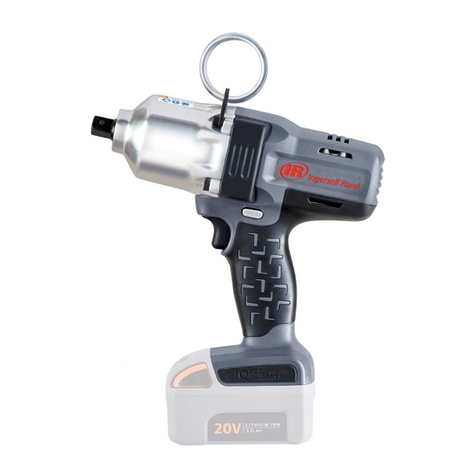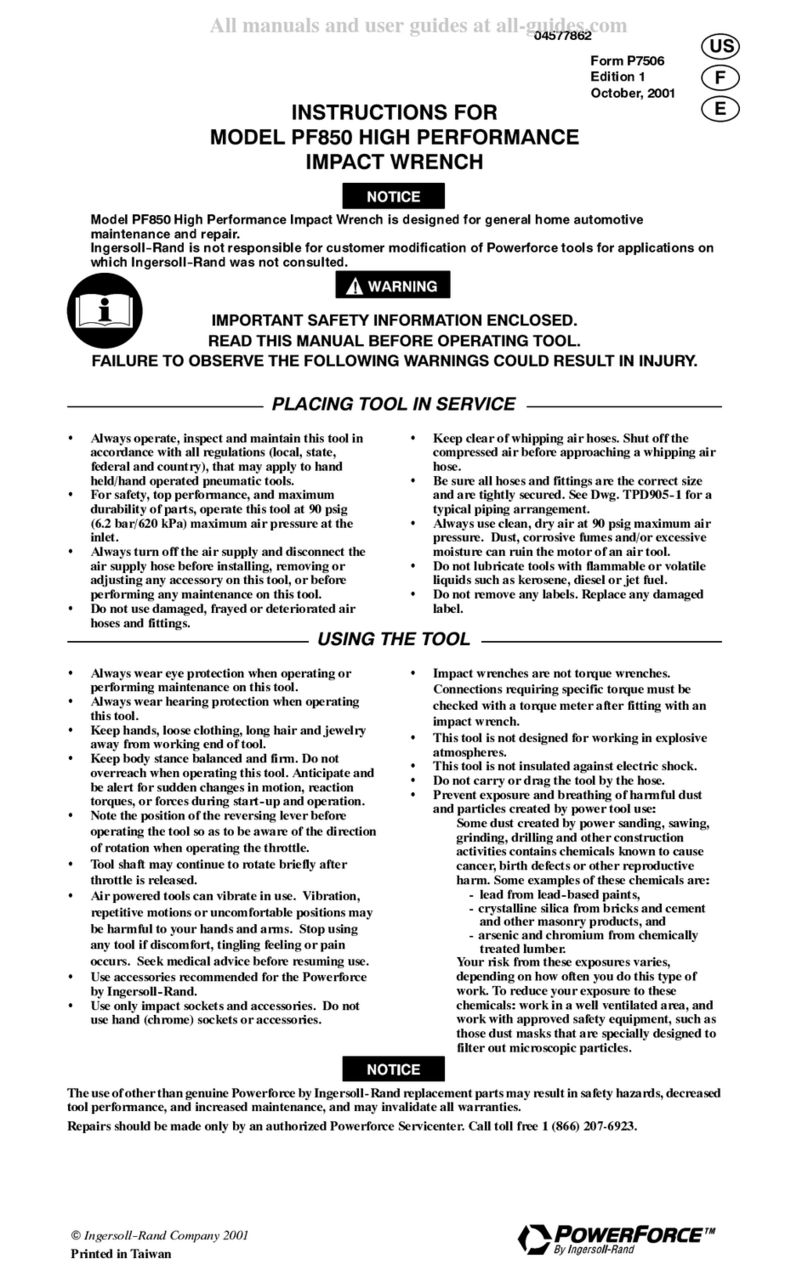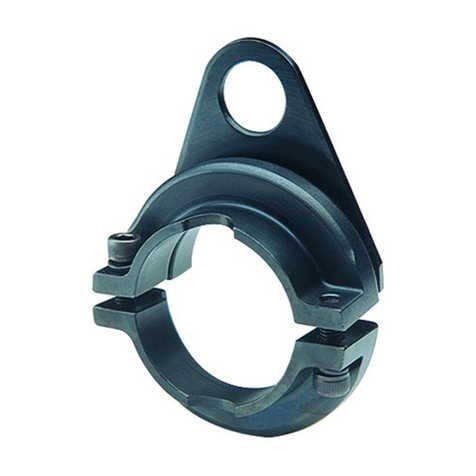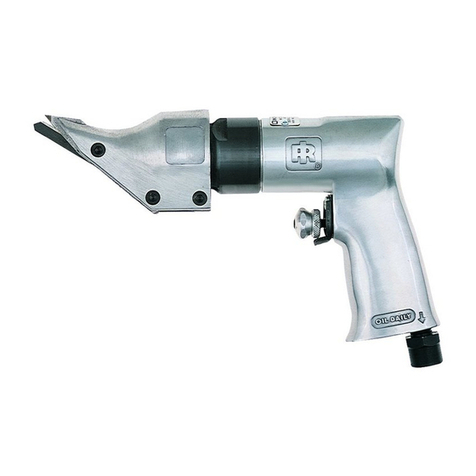
Product Safety Information
Failure to observe the following warnings, and to avoid these potentially hazardous situations, could result in death or serious
injury.
Read and understand this and all other supplied manuals before installing, operating, repairing, maintaining, changing accessories
on, or working near this product.
Always wear eye protection when operating or performing maintenance on this tool. The grade of protection required should be
assessed for each use and may include impact-resistant glasses with side shields, goggles, or a full face shield over those glasses.
Always turn o the air supply, bleed the air pressure and disconnect the air supply hose when not in use, before installing, removing
or adjusting any accessory on this tool, or before performing any maintenance on this tool or any accessory.
Note: When reading the instructions, refer to exploded diagrams in parts Information Manuals when applicable (see under Related Documentation
for form numbers).
•
•
•
•
After the rst 24 hours of operation of a new Tamper, or one that has reassembled, retighten the Head Block (20) on the
Barrel (33). Even though this connection is drawn extremely tight during assembly, the parts will usually seat during the rst few hours
of operation resulting in an ever so slight loosening of the valve parts and reduced performance. To tighten the connection, grip the
ats on the Barrel in a rugged vise and draw the Head Block to approximately 500 ft-lb. (678 Nm) torque.
Lubrication
Each time the Model 341 and 441 Tampers are disassembled for
maintenance, repair or replacement of parts, lubricate the tool as
follows:
Work approximately 1.5 cc of Ingersoll Rand No. 28 Grease into
the grease chamber by injecting through the Grease Fitting (35).
1.
Remove the Oil Chamber Plug (26) and ll the oil chamber with
9 cc of Ingersoll Rand No. 10 Oil.
2.
Disassembly
General Instructions
Do not disassemble the tool any further than necessary to replace
or repair damaged parts.
Whenever grasping a tool or part in a vise, always use leather-
covered or copper-covered vise jaws to protect the surface of
the part and help prevent distortion. This is particularly true of
threaded members and housings.
Do not remove any part which is a press t in or on a subassembly
unless the removal of that part is necessary for repairs or
replacement.
Do not disassemble the tool unless you have a complete set of
new gaskets and O-rings for replacement.
Disassembly of the Throttle Assembly
Clamp the Head Block (20) of the Percussion Tool in leather-
covered or copper-covered vise jaws.
Loosen the Handle Locknut (18) and unscrew the Handle (17)
from the Head Block.
Clamp the Handle in leather-covered or copper-covered vise jaws.
Unscrew the Throttle Handle Body (1) from the Handle. Remove
the Screen Retaining Spring (15) and the Air Strainer Screen (16).
Clamp the Throttle Handle Body in leather-covered or copper-
covered vise jaws Throttle Lever (6) upward.
Drive out the Throttle Lever Pin/Throttle Lever Stop Pin (7) and
remove the Throttle Lever.
Unscrew the Street Elbow (5). Unscrew the Reducing Bushing (4).
Rotate the Throttle Handle Body in the vise to gain access to the
Throttle Valve Cap (13).
Unscrew the Throttle Valve Cap and remove the Throttle Valve
Spring (14).
Carefully drive the Throttle Valve (8) out of the Throttle Handle
Body through the throttle valve cap bore.
Unscrew the Throttle Valve Face Retaining Screw (11) from the
Throttle Valve. Remove the Throttle Valve Face Cap (10), the
Throttle Valve Face (9), and the Retaining Screw Lock Washer (12).
1.
2.
3.
4.
1.
2.
3.
4.
5.
6.
7.
8.
9.
10.
11.
In the following step, replacement of the Throttle Valve Bushing
will require the use of a special, two-step reamer (Part No. 43505)
to size the Bushing after it is pressed into the Throttle Handle
Body. The reamer is a special order item from Ingersoll Rand.
12. If required, press the Throttle Valve Bushing (2) from the Throttle
Handle Body.
Disassembly of the Head Block
Clamp the Barrel (33) in rugged vise jaws with the Head
Block (20) upward.
Using a large wrench, unscrew the Head Block from the Barrel.
Remove the Exhaust Deector Assembly (46), Deector Retainer
Assembly (48), Exhaust Silencer (50) and Deector Screen (51).
Remove the Valve Box Cap (27), Valve (28), Valve Box Cap
Dowel (30), Valve Box (29), and the Valve Box Dowels (31).
Remove the Lubricator Valve Cap (25) and the Lubricator Valve
Spring (24).
Carefully push the Lubricator Valve (22) from the Head Block
through the lubricator valve cap bore.
If required, remove the Lubricator Valve Face (23) from the
Lubricator Valve and the Lubricator Valve Seal (21) from the Head
Block.
Disassembly of the Barrel
Clamp the Piston (43) in leather-covered or copper-covered vise
jaws with the Malleable Butt (45) downward.
Using a large hammer, tap the Butt o the Piston.
Rotate the Barrel in the vise, Butt end upward.
Loosen the Locking Nut (42A) and remove the Guide Retainer (41).
Gently remove the Piston from the Barrel.
Remove the Rod Front Seal (40), Piston Rod Guide (38), the Rod
Rear Seal (37), and the Seal Support (36).
If required, remove the Seal Support Gasket (34) from the groove
in the Barrel.
1.
2.
3.
4.
5.
6.
7.
1.
2.
3.
4.
5.
6.
7.
